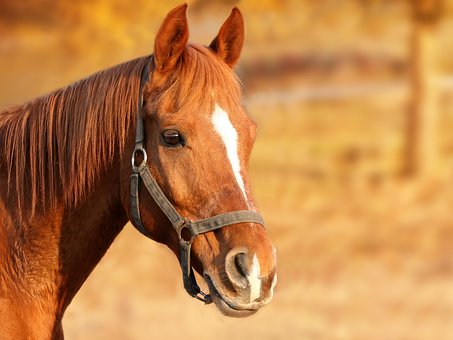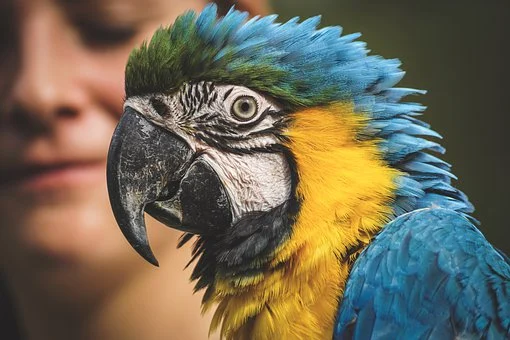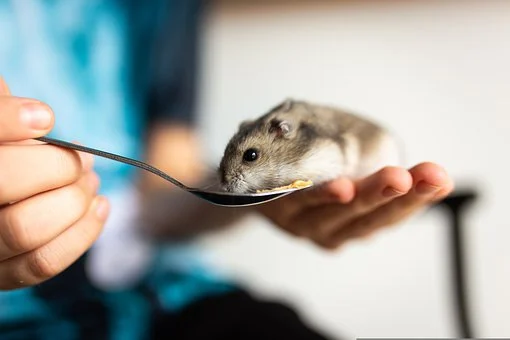2022-11-01
Speaking of support pets, we usually imagine dogs, who provide physical and/or emotional support to people with a disability. Does this mean that support pets can be dogs only? No, it does not. In today’s article, we will distinguish between service animals and support animals and will let you know what pets can become support animals.
An “emotional support pet” usually refers to the term Emotional Support Animal (ESA), which is an animal that provides comfort and companionship to a person with a mental disability.

In order for a person to verify that their ESA will behave appropriately in public places, they need to get their ESA trained in basic obedience. However, ESAs do not perform specific tasks, that are directly related to a disability. This is the main difference between Emotional Support Animals and Service Animals-the latter have been individually trained to perform specific tasks, directly related to a disability.
You have to be diagnosed with a mental disability and an ESA should have been prescribed to you by a mental health professional, who is licensed in the state/country you are based in. Once you have a medical letter, you can prove that you actually need your pet as a support animal in your daily life. This type of letter might be required by a landlord, in case you would like to live with your support pet.
No. Since ESAs do not do specific tasks for a person with a disability, they have limited access rights. Employees may deny an ESA access to the premise, especially if it runs a no-pet policy. Also, emotional support animals are not allowed to fly onboard an aircraft free of charge. This was not always the case until a change in the pet policy of airlines took place at the end of 2020. However, these support animals are still protected under the Fair Housing Act, which guarantees both Service Dogs and Emotional Support Animals accommodation rights.
Another essential difference between emotional support animals and service animals is associated with the type of animals that qualify for this type of work. Service animals can be dogs only, that have been trained to do specific work for the benefit of a person with a disability. Some US states also recognize miniature horses as service animals. However, when it comes to Emotional Support Animals, regulations are different. All kinds of domesticated species are considered eligible as ESAs.

As you know service animals can be only dogs, so logically dogs are the most popular specie among service animal handlers. However, they are the most popular animals among companion animal owners. This tendency is not likely to change soon, as dogs have proved their qualities such as intelligence, loyalty, innate ability to sense people’s emotions and recognize behavioral changes...etc. There is a variety of tasks, that dogs can be taught to perform, both physical and mental, which makes them an invaluable part of their owners’ lives. As support animals, they can tremendously reduce emotional overload and make us relaxed, loved, and less stressed. We can always rely on our canines, as they are appreciative creatures. Dogs can develop a very strong bond with their owners, which is less likely to occur between a person and an animal of another specie.

I assume that those of you, who are cat parents, will disagree with the last statement. Yes, you are also correct! Many cat owners develop a strong bond with their feline friends. Cats are also a popular choice among ESA owners, as they can alleviate the symptoms of mental disabilities, stress, and emotional overload. Through purring, cuddling with us, and giving us a “kiss” our paw friends show their love to us and help us feel happier. There are, of course, some differences in raising a cat vs raising a dog, especially since cats are considered much more independent than dogs. However, they still can become amazing support pets and provide their humans with unconditional love!

If you have not interacted with a horse yet, you may not be aware of how incredible animals horses are. They are intelligent, trainable, friendly, sensitive, and energetic creatures. As mentioned in the article above, miniature horses are also accepted as service animals in some US states. Raising a horse is definitely not an easy task, as you will need a lot of space, supplies, and time to invest in his/her raising and training. There are also many specifics related to raising these incredible animals. Examples are: including windows, when designing a barn, as horses need light and fresh air; riding a horse several days a week, based on his/her age and health; not letting a horse alone (without the company of other horses). You should take a lot of factors into consideration if you want to have a horse as a support pet.

What about having a feathered friend as a support pet? Birds are also a great choice as ESAs, as they are social, and very intelligent, especially crows and parrots. If you are not feeling comfortable living in a quiet and silent environment, a cute bird will make your day much happier and full of interesting sounds! You will be able to enjoy your pet's vocal skills and also if you opt for a parrot, you can teach him/her certain words, phrases, or even whole sentences. You should be careful if you would like to raise a bird in a household with multiple pets, and make sure that your feathered friend is safe. Taking care of a bird is much easier than taking care of the animals listed above, as birds do not require walks, special toys, litter boxes, or big houses to live in. You should remember that being locked in a cage at all times is considered a death sentence to birds, so you should let your pet outside a cage for at least 1-2 hours a day, or even more, based on his/her specie.

Rabbits as Emotional Support Animals
Having a rodent as an ESA is also an option, especially when it is a cute fluffy rabbit. Who can resist a fluffy rabbit sitting in their lap?! Rabbits are small, quiet, and shy animals, suitable for apartment living, which is a big advantage compared to other types of pets. These little balls of fur are very sensitive, and you should be very careful if you have other pets or a small child/children. Rabbits do not tolerate rough interaction, so you should be very affectionate when petting your rabbit. An important rule to follow, which basically applies to all animal species is to not reach out to them from above, as this is something their predators would do. Providing your cute friend with quality forage, and water supplies, regularly cleaning their shelters, and being gentle, are general rules for raising a rabbit. It is not so difficult, isn’t it?

A little fluffy ball, cuddling in your hand or in your lap-this so lovely and relaxing, isn’t it?! Raising a hamster has many advantages, namely related to costs, time, engagement, and living space they require. However, raising a representative of these little cute rodents is not as easy as you may think. There are still factors to consider, i.e. there are different types of cages, based on the hamster variety; you will need to arrange the cage in a way that will make your little fellow feel comfortable (putting absorbent bedding, providing him/her with things to chew, such as cardboard, or wood, a water bowl, quality food, that also includes vegetables and fruits and not only store food, being extremely gentle when holding him/her, not forcing him/her to come to you, but giving him/her treats and gaining his/her trust...etc.). Another important factor to pay attention to is the animal’s health. Choosing a healthy hamster, avoids the risk of diseases like the Lymphocytic Choriomeningitis Virus (LCMV) being transmitted to you. This disease can be transferred to people who have been exposed to infected rodents and their saliva, urine, droppings, or nests.
There are no specific regulations in regard to the species that may and may not become ESAs. As a general rule, all domesticated species can be support pets...even snakes. Actually, some facilities already use snakes as a part of the pet therapy they provide. We want to note, that Therapy Animals are a type of support pets, that provide comfort and companionship to many people in designated facilities. Unlike TA, ESAs provide comfort to one person. You may wonder why some people prefer to interact with reptiles, instead of a cute kitty, doggy, or fluffy rabbit... Some snake species are considered very calm and non-aggressive. Petting a reptile is something unusual, which can be considered even unique for many people. One of the reasons pet therapy via a reptile works is that the person’s attention is completely directed to the animal, which distracts them from their problems and negative thoughts. Often people perceive this experience as an accomplishment that is worth talking about it and even praising it. Although snakes do not have the intelligence to develop an emotional bond with their owners, some species can determine when a person is handling them. This means that a type of connection still occurs.
Emotional Support Animals are not required to be registered. You can still do it, but this won’t automatically provide your pet with any rights.
There is no specific rule in regard to the maximum number of Emotional Support Animals a person can have. However, you still need to check the laws in your state or region. In case you would like to have more than one ESA, you will need to be able to explain why you need two or more ESAs and all these animals should be prescribed to you by a licensed mental health professional.